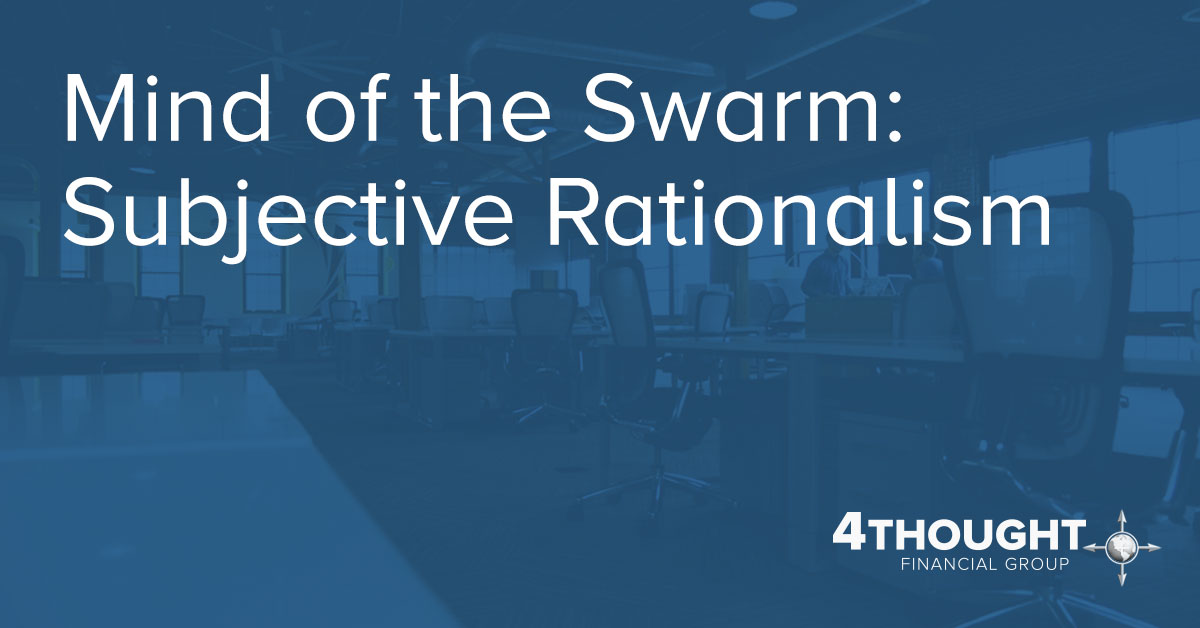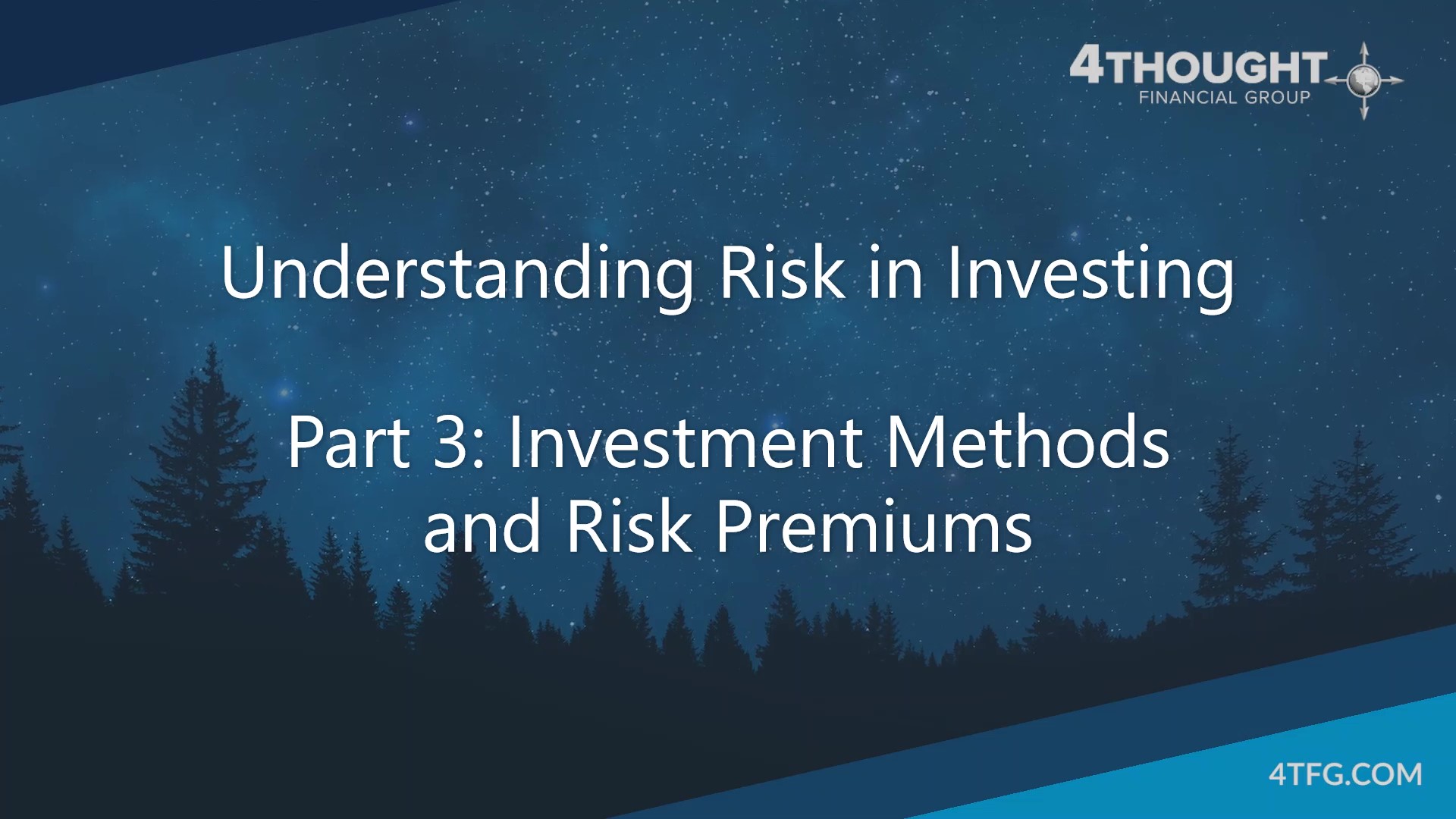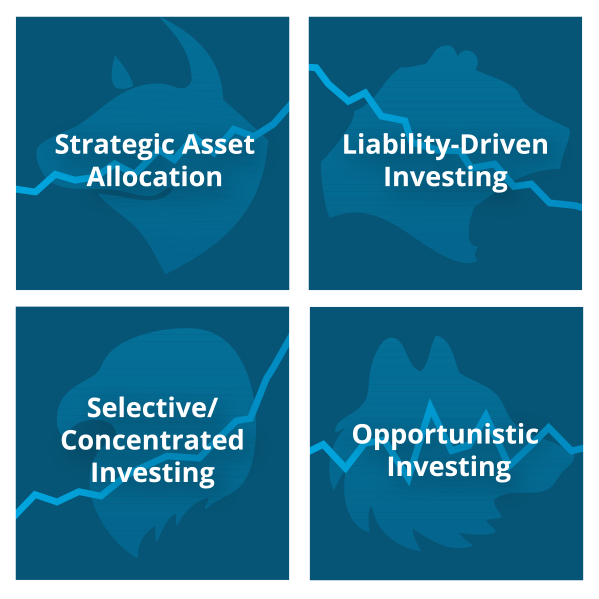
If you are a professional in the investment management or economics fields, your entire system of decision making and the basis of everything you do in your workday may be wrong. While the following discussion may seem purely academic, it could actually have far-reaching practical implications for your personal and professional livelihood.
 Classical economics and many of its more modern offshoots hold that participants in our real economy (human beings) are rational. This fundamental assumption is the basis on which virtually all of the concepts in classical economics are derived. It is the glue that holds together the framework for our understanding of all of human economic interaction. Without this assumption, classical economics falls apart at the seams.
Classical economics and many of its more modern offshoots hold that participants in our real economy (human beings) are rational. This fundamental assumption is the basis on which virtually all of the concepts in classical economics are derived. It is the glue that holds together the framework for our understanding of all of human economic interaction. Without this assumption, classical economics falls apart at the seams.
A further assertion of conventional economic thought is that the word rationalmeans that each participant in the economy has equal access to all available information, and that this information will be processed and reacted to in the same “rational” manner by all participants who receive it. This further assertion could be thought of as “Objective Rationalism”, in which all economic participants have a sort of bird’s-eye view of the global economy, and are capable of rapidly and accurately processing all information to arrive at the most efficient and favorable response, a response that should result in the most efficient allocation of resources to benefit the entire economy as a whole. With this cause-and-effect classical physics-like view of economics, individual human behavior and the behavior of society as a whole should theoretically exhibit clockwork predictability as new information becomes available and new exogenous shocks and economic stimuli rear their heads. By this I don’t mean we should be able to predict the future, but given hindsight knowledge of the information, we should be able to predict what individual participants would have done in the situation, because it’s the same thing all participants would have done.
There are also certain alternative branches of economic thought that have gained significantly in popularity in recent years, such as Keynesianism, which assert that individual human beings may be irrationalat times (or even entire societies for extended periods of time). We’ll refer to these various interpretations as “Irrationalism”. Under these views, economic participants may not only have unequal access to available information, but may also exhibit long lasting or perpetual inabilities to process that information correctly to come to the right conclusions for themselves and for the economy/society as a whole. Thus they are irrational. Proponents of this view are asserting a sort of chicken-headedness principle for individual behavior, in which crossed wires in the computers of individual human brains and emotionally-driven decision making result in large scale inefficient allocations of resources across the economy. If this assumption is reality, then it has serious implications for the use of government and pseudo-governmental economic policy measures. Evidence of policymaker belief in the irrationality assumption has been seen on a scale not formerly seen in history during the last few years of Quantitative Easing by the US Federal Reserve and other ultra-loose monetary policy by central banks around the world. The irrationality assumption is also an argument often made by the proponents of central planning of economies, such as in the case of Communist, Fascist, and Authoritarian regimes.
The rebirth comes in the form of Subjective Rationalism.
The two conventional interpretations of the “rational” assumption presented here (“Objective Rationalism” and “Irrationalism”) are wrong. They are wrong because they fail to assess human (and non-human) behavior at the smallest, most granular, digital level - the level of informational processing by the individual brain. In much the same way that the miniscule granularity of Quantum Physics has provided insight into very large universe-scale phenomena, it stands to reason that analysis of the smallest fundamental particle of economics, individual brain decision making, may provide insight into very large global economy-scale phenomena. If rationalism is dead, then personally this is my Easter Sunday of economic thought. The rebirth comes in the form of Subjective Rationalism.
One might argue that the large numbers of participants in the human real economy and in the financial markets exhibit similar organic characteristics to the many swarm-like phenomena found in virtually every biological kingdom, as diverse as insects, fish, birds, reptiles, amphibians, mammals, bacteria, plants, fungi, and others. If we define a swarm simply as a large number of participants whose myriad individual behaviors aggregate and interact to result in a larger collective entity behavior (that may bear no resemblance to the individual behaviors that comprise it), then it is reasonable to look at both baitfish and human beings as exhibiting swarm behaviors.
So let’s consider a school of baitfish...
When a school of baitfish is attacked by one or more oceanic predators in the open water, it often takes on a collective defensive behavior called a bait ball. A bait ball often consists of thousands or even millions of individual fish of the same species schooling together and swimming in a circular or spiral pattern to form a massive tightly rotating ball. The rotating ball forms not because of a collective decision to take this action, or because any one fish or group that leads the school has decided to do this, but because each individual fish is attempting to swim in the general direction away from the predator(s) and simultaneously jockey for position relative to its brethren by erring towards the center of the ball in an attempt to hide for purposes of self-preservation. The erring towards the center creates the curvature of the swim path, and thus results in the ball. The result of each individual acting for its own self-interest is a collective behavior that is believed to provide defense for the entire school by creating confusion amongst the predators and an inability to easily lock in on any one individual for consumption. Although this defensive mechanism is far from perfect (often the bait ball is nearly decimated by the predators in the end), in the open water it at least provides a greater probability of survival (for individuals and the group) than simply swimming away in one direction from predators that are much larger and faster. Let’s look at the decision making process of each individual fish to determine how the ball operates.
While swimming in one direction may be “rational” for one fish, the same direction may be completely “irrational” for another fish and into the jaws of the predator because of its perspective.
When a predator actually mounts an attack on the ball and swims in at speed with snapping jaws or swinging sword, the ball will abruptly part around the predator in avoidance, and may seem to engulf it as each individual fish swims away from the predator and back toward the center of the bait ball. It is an “every fish for himself” situation. The result is an extraordinarily complex pattern of movements as each baitfish reacts to the predator(s) and to the movements of each of the other individual baitfish. The bait ball becomes completely unpredictable, both to the predators and to any human onlookers that might try to predict the movements, rapidly expanding, contracting, and morphing into various shapes and orientations. The reason for this unpredictability is that the “rational” direction to swim is different for each individual fish because of its position and line of sight relative to both the predator and relative to each of its brethren. While swimming in one direction may be “rational” for one fish, the same direction may be completely “irrational” for another fish and into the jaws of the predator because of its perspective. For the baitfish, what is “rational” is determined subjectively, by the perspective of each fish. There is no one rational movement for the entire school to make when attacked by predators. There are many rational movements. In fact there are one or more for each of the thousands of fish.
Now let’s take simple examples of two different potential baitfish perspectives and see what “Objective Rationalism” would predict the fish do, and then see what “Irrationalism” would predict the fish do:
- Baitfish 1: When the predator attacks, the baitfish is at the outside edge of the bait ball, and can see both the predator(s) and the other baitfish directly next to it.
- Baitfish 2: When the predator attacks, the baitfish is near the center of the bait ball, and can only see the other baitfish surrounding it.
Objective Rationalism prediction for Baitfish 1: Baitfish 1 will wait until the final moment and quickly move laterally to avoid being eaten without clumsily bumping into its brethren because it can see both the speed/direction of the predator and the other baitfish next to it. [Analysis: This has a reasonably high probability of actual occurrence because Baitfish 1 has the information necessary to make optimal evasive maneuvers, and has millions of years of evolution to back up this engrained instinct].
Objective Rationalism prediction for Baitfish 2: Baitfish 2 will wait until the final moment and quickly move laterally in the same direction as Baitfish 1 to avoid being eaten without clumsily bumping into its brethren because the information on the speed/direction of the predator has been instantaneously transmitted to it and all of the other baitfish via undefined means. [Analysis: This has a much lower probability of actual occurrence, because Baitfish 2 cannot see the predator speed/direction, there is no known mechanism for instantaneous information transmission amongst baitfish (which Objective Rationalism assumes), and if all of the baitfish were in the habit of moving in the same direction at the same time during evasion, their movements would become predictable, and they would be more easily eaten. It is much more likely that Baitfish 2 might survive simply because of the large numbers of other baitfish from which the predator must select a target.]
Irrationalism prediction for Baitfish 1: Baitfish 1 will not be able to effectively react to the attacking predator because of its flawed emotional decision making abilities and will continue following the rest of the school, resulting in its death through predation as the predator locks on to it. [Analysis: The probability of this actually occurring is relatively low because of millions of years of natural selection for predator avoidance, but it is indeed likely to be the experience for at least some baitfish because of their past experiences and weaknesses such as loss of an eye or fin, or insufficient brain function due to genetic defect/ineptitude or brain damage.]
Irrationalism prediction for Baitfish 2: Baitfish 2 will organize a vanguard party of other intellectually superior baitfish from the school, which will create a system of rules and processes that will enable the vanguard to effectively control and coordinate each of the other less well-equipped individuals in the school and lead the school successfully to safety from the predators. [Analysis: I am not aware of a known instance of this occurring in nature within the context of swarm behavior.]
The example of the baitfish swarm is used here because it illustrates in a relatively simple form the shortcomings of two competing and diametrically opposed fundamental economic assumptions, those of “Objective Rationalism” and “Irrationalism”.
Each of these have their merits, but are deficient in the end. There is, however, a means of reconciling them. That reconciliation can occur through an assumption that provides a simpler, more realistic, more predictive way to look at economic system participant behavior – that of Subjective Rationalism. Subjective Rationalism is the assumption that each individual participant will make a rational decision for themselves from their own perspective based on the potentially limited information they have available at that time, through the lens of their current circumstances, and based on a decision-making framework built from past experiences and biological capabilities. Note this means that what is “rational” for one fish/person may be completely “irrational” for another, which is probably the reason for the existence of the two competing conventional views. So what predictions does Subjective Rationalism make about Baitfish 1 and 2?
Subjective Rationalism prediction for Baitfish 1: Baitfish 1 will wait until the final moment and quickly move laterally to avoid being eaten without clumsily bumping into its brethren because it can see both the speed/direction of the predator and the other baitfish next to it. [Analysis: Same answer as Objective Rationalism - This has a high probability of occurrence because Baitfish 1 has the information necessary to make optimal evasive maneuvers, and has millions of years of evolution to back up this engrained instinct.]
Subjective Rationalism prediction for Baitfish 2: Baitfish 2 will determine its own speed and direction by instinctive interpolation of the midpoint speed/direction of each of the baitfish it has within its immediate field of senses, improving its potential for survival by relying on the senses of its neighbor fish (which may sense something that it doesn’t) and using what little information it has at its disposal. [Analysis: This is actually what occurs in nature, with each individual undertaking a separate decision making process, which helps to explain the unpredictably complex and seemingly chaotic behavior of a bait ball under attack. It is likely that Baitfish 2 might survive, at least for a while, because of the accumulation of the individual information/movements of large numbers of other baitfish and the confusion to the predators from the unpredictability of the bait ball.]
In reading this, one might think that the truth and superiority of this Subjective Rationalism assumption is obvious – and it is. Of course people do what makes sense for them as an individual, using the information they have at hand, at the time they receive it. This is no surprise to the layman, so why is this academic discussion needed? What is astounding is that this obvious reality is not reflected in the fundamental assumptions of the conventional economics (especially macroeconomics and financial economics) behind most of the world’s trade policies, financial market regulations, political policies, and other forms of economic regulation. Furthermore, it is not addressed in any significant manner in any widely used theory of investment management or financial market function that I am aware of.
To get an idea of how far-reaching the consequences of Subjective Rationalism might be, let’s start with an application to the function of the secondary financial markets.
The financial markets are composed of millions of decision-making human (and non-human entity) market participants, each acting in their own self-interest, and exemplifying individual behaviors that when aggregated together result in larger collective behaviors (of the stock market as a whole) that defy prediction. Markets exhibit the basic organic characteristics of a biological swarm, just like a school of baitfish, a flock of swallows, or a swarm of locusts. So if we can accept this, and further accept that the reason a swarm exhibits largely unpredictable movements is because there is no leader or central brain, but instead is composed of the aggregated behaviors of each individual within the swarm utilizing the information it has immediately at hand to make the most rational decision for its own interests (a decision that may seem irrational to another member of the same swarm, or irrational for the swarm as a whole), then we can begin to take a much different view of the mechanics of the markets than the currently widely accepted theories provide.
...fundamental analysis adheres to an objectively rational idea that each security should have an intrinsic value that is the same for all investors.
For comparative purposes, let’s look at the current dominating academic theory of financial market function, known as the Efficient Markets Hypothesis (EMH), which is an oft-used explanation of why it is so hard to predict the movement of stock prices (individual stocks and the stock market as a whole), and why it is so difficult (if not impossible in the eyes of EMH proponents) to reap gains from active portfolio management that consistently exceed the gains on indexes. In a nutshell, the various forms of EMH (Weak, Semi-Strong, and Strong forms) state that because of the large number of objectively rational market participants and the rapid (near instantaneous) transmission of information amongst them, the pricing of securities adjust so quickly to new information that there are rarely, if ever, differences between the intrinsic “true” value of a security and its current market price, and thus securities are efficiently priced by the market. This hypothesis forms the basis of the arguments for the use of most derivations of Modern Portfolio Theory, strategic asset allocation methods, and passive index-based investing, which are all very widely utilized (nearly ubiquitous) investment processes amongst the world’s institutional and retail investors. In addition, most methods of fundamental valuation analysis and “value investing” are partially influenced by the concepts of EMH (although they don’t adhere to a strong belief in it). More importantly, fundamental analysis adheres to an objectively rational idea that each security should have an intrinsic value that is the same for all investors. EMH itself is based on Objective Rationalism, on the idea that each market participant gets access to the same information at nearly the same time, and will process and react to it in exactly the same way, coming to the same result, within the same time frame.
If we apply a Subjective Rationalism assumption, however, and think about this from our own real-world experiences, we find that in truth not all market participants have access to the same information (due to differences in information access technology, paid services/resources, insider information/trading, or intentional/unintentional ignorance); nor do they receive it at the same time (the trader sitting at his desk gets the info faster than the trader on vacation); nor do they process it in the same way (due to training, natural ability, differences in method/technique, tools utilized, risk tolerance, past experiences, etc.); nor do they react in the same time frame (a high frequency trading hedge fund may react with a fraction of a second, while a mom and pop retail investor may decide to pull their money from a stock months after new information becomes available to the public). In summary, investors do not receive, process, or act on information from the same perspective, so their resulting behaviors, while rational to the individual taking action, may seem irrational to another individual market participant, or to an outside onlooker concerned about greatest benefit for the market as a whole. So although EMH may provide one useful explanation of onemarket price movement mechanism or factor (possibly out of many mechanisms/factors), the underlying Objective Rationalism assumptions of EMH just go too far in attempting to simplify the explanation of the basic financial market pricing mechanism, and thus EMH is not a full explanation of market movements (and maybe not even a valid one).
If we apply a Subjective Rationalism assumption, then several real-world phenomena are more easily explained. For example, let’s look at market cycles: If we make the realization that investors behave in the same way that the individual participants in a swarm behave, in that they are reacting not only to the exogenous shock information that they may receive on securities or markets (like the attacking oceanic predator in the baitfish example), but also reacting to information they may receive based on their own perspective like endogenous information they have about the behaviors of other investors inside the system (as in the movements of the other baitfish in the bait ball), then we can more easily explain phenomena like boom and bust market cycles. During a boom individual participants may knowingly jump into a market that they believe is overvalued based on their own measurements (an irrational decision to the objective rationalist), not because they believe it should go higher on fundamentals, but because they believe other investors will drive the market higher on loose monetary policy (as an example), and they must ride this wave or miss out on the exuberance that can account for a large part of long term returns (an act that may be subjectively rational when the perspective-based information about what other investors are doing is incorporated into the decision making process). Thus, the boom side of the market cycle is exacerbated. On the flip side, during a bust individual participants may knowingly pull money out of a market that they believe is already undervalued based on their own measurements (an irrational decision to the objective rationalist), not because they believe it should go lower on fundamentals, but because they believe other investors will drive the market lower on erosion of trust in the financial markets (as an example), and they must attempt to avoid or minimize this slide by converting to cash, or face the potentiality of not being able to meet short/intermediate term living expense needs and obligations (an act that may be subjectively rational when the perspective-based information of the actual living expenses and financial obligations of the individual investor are incorporated into the decision making process). Thus the bust side of the market cycle is exacerbated. So Subjective Rationalism can more easily explain these real world phenomena when compared to Objective Rationalism.
But let’s not get too down on Objective Rationalism, because Irrationalism is equally inadequate to explain the above behavior, and is probably more damaging an assumption for human civilization. This assumption would hold that the cycle-exacerbating investors mentioned above were behaving irrationally in driving the overall markets further into irrational exuberance or into the depths of a market trough, driven by their own fear and greed. But when viewed from the perspective of each individual, their decisions may have been perfectly rational to protect their own self-interests, and were the most sensible courses of action given the information they had at hand in the situation. Proponents of the Irrationalism assumption might thus state that we should put controls in place to prevent this “irrational” behavior, which is causing “excessive volatility”. This would be a mistake, because by limiting the (subjectively) rational behaviors of the individuals in the swarm, we would be preventing them from taking action to protect themselves or advance themselves, which is contrary to millions of years of evolutionarily engrained behavior. It simply will not work. But more importantly, the unintended consequences of these controls will necessarily diminish the outcome for the entirety of the system, just like telling the baitfish it may not react to the movements of the others in its school, which would likely result in its death, and ultimately the faster death of the school as a whole.
To give you an idea of how far-reaching the implications of the assumption of Irrationalism may be, consider the following popular economic concepts that have a basis in it: Keynesianism (in general); much of central bank monetary policy (such as Quantitative Easing); capital market controls (such as cross-border flow controls and more recently the “flash crash” trading rule); financial market behavior regulations (such as the Dodd-Frank bill); protectionist international trade policy; income taxation; and just about any other concept that assumes that a small central group of superior decision makers should make the decisions for all of the individuals within our civilization that otherwise would be made by the aggregated subjectively rational decisions of every participant in the swarm.
If the assumption of Subjective Rationalism is closer to reality than the more conventional opposing views of Objective Rationalism and Irrationalism, a switch to this idea is so fundamental that it would likely require a rewrite of most of the economic textbooks written during the last century, and a rethinking of government and pseudo-governmental economic policy around the world… let alone a basic reassessment of investment theory.







Leave a Comment